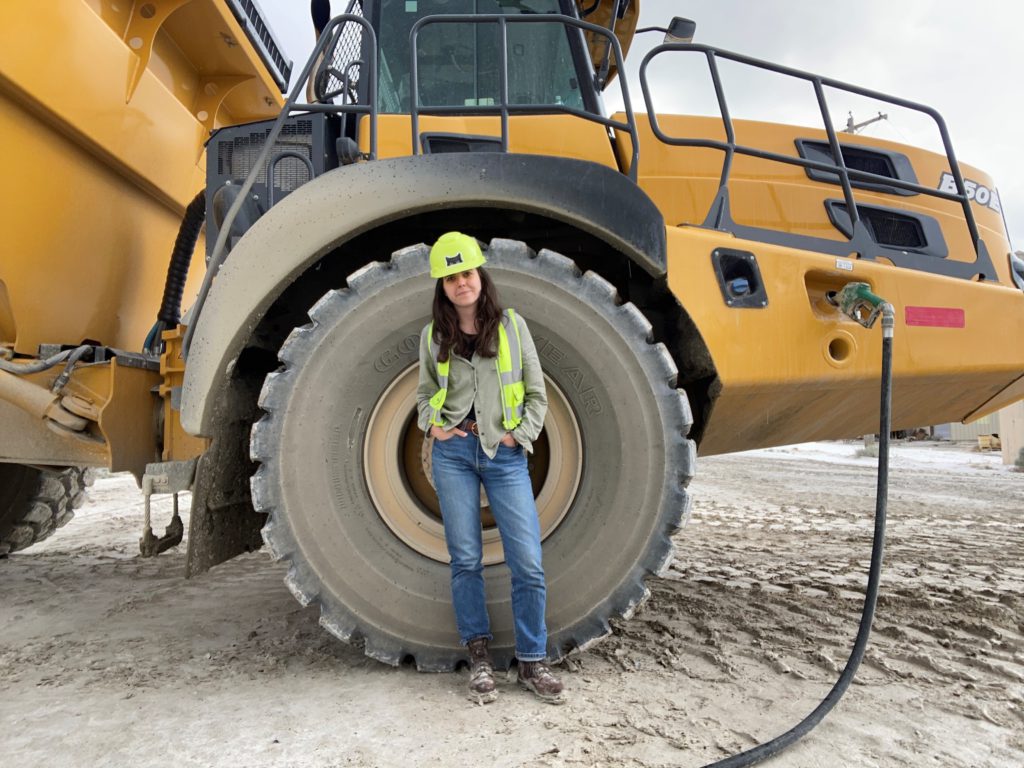
On the theme of highlighting women’s talent and contributions to the industry, and identifying role models for future generations, MINING.com caught up with Cat Culkin, chief technology officer at Pronto.ai on a virtual site visit in California.
With a background in robotics and auto, Culkin became a graduate student instructor in embedded control systems while earning her master’s degree in electrical engineering at the University of Michigan. She worked with Ford Autonomous and Lucid Motors early her career before joining Pronto.ai, whose technology enables autonomous off-road trucking systems for the mining industry, based in their San Francisco office.
Culkin shared some industry insights in this exclusive interview.
MDC: What led you to a career in mining?
Culkin: I came in from the side. My background is in robotics. For undergrad I studied electrical engineering and physics and for graduate school I studied control systems. My heart was always in robotics. Robotics is kind of the intersection between software and hardware. You write code to make things move, to do what you want it to do. I like to make things move. That can be from automating a mining truck to flipping a switch in a coffee maker.
I worked in a lab that did autonomous control systems in grad school, and from there I got into internships and Ford and Lucid Motors and always loved the self-driving aspect, which is how I ended up at Pronto. Pronto had a similar journey, where it was self-driving company at first, and we realized that the best self-driving to start with is mining.
It’s a real product – it makes profits now. It’s a constrained environment, still very dynamic and interesting, there’s a lot going on, but its somewhere where, based on current regulations, we have driverless vehicles, and they can provide value. That’s how I got into [mining], because Pronto got into it. It’s the basis of everything that we build – from iPhone to roads to everything in between.
MDC: What projects are you working on now?
Culkin: We’re automating the mining trucks that are filled with material to be dumped, and crushers, stockpilers — there’s a lot of parts to that. There’s a lot of safety layers, object detection, person detection and vehicle detection. People struggle with that today – tonne haulage is a fairly dangerous part of mining. It’s a top place for fatalities. We’re bringing in new deployment – we’re going to have three autonomous trucks here, so its all hands on deck. And we’re doing a stripping operation, so we’re going to be hauling dirt from an excavator and stockpiling it in the waste area.
Working in more interesting conditions; muddier, dirtier, harder. We’ll have multiple truck interactions – we’re able to interact with other vehicles on the site. The excavator can set where it wants to load, its not just running on rails, it can actually choose its path, which makes it easier for operators. We’re always working on improving safety systems and making sure our object detection is the best in the business.
MDC: What are some challenges/opportunities for women in the industry?
Culkin: There’s a lot of pressure walking into a room and being the only woman and speaking up. Every time I ask a question, I feel like I’m representing all women a bit, and I want to do well. And so, for the next woman who walks into the room, they’ve already seen someone who is capable and confident and can do their job well. I feel like I have to be on, all the time. I think that’s the biggest challenge. But the only reason is because I’m excited for the next woman and I want to make her job easier.
In terms of opportunity, women are getting into the industry outside of operator roles. They’re coming in with new technology and new sustainability initiatives, and I think that’s awesome, and I think it’s because of new innovations, from geology to safety to sustainability to automation. I think that’s where we’re going to see more and more women entering the industry.
MDC: What do you think are some misconceptions about the mining industry?
Culkin: I think one of the biggest misconceptions about the industry is that is ‘slow’ and ‘behind’ and not ready for new things. There’s a lot of old trucks running in mines, but if you get into a new mining truck there’s a lot of technology in these. And they are looking for more. People don’t think if mines as being innovation hubs, but I think there’s a tonne of technology coming in and I think that they’re ready for it.